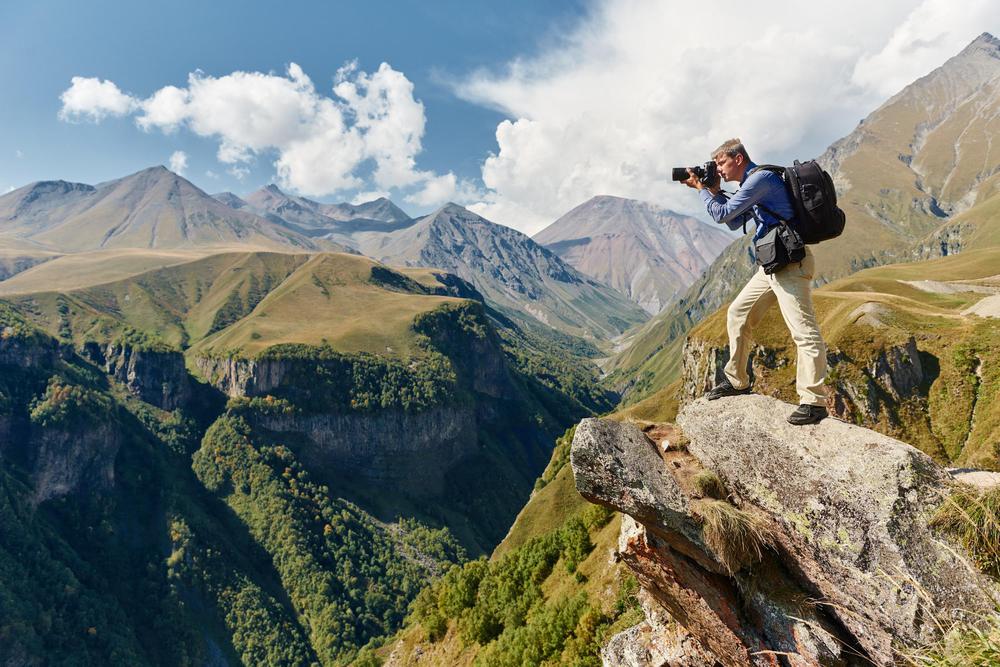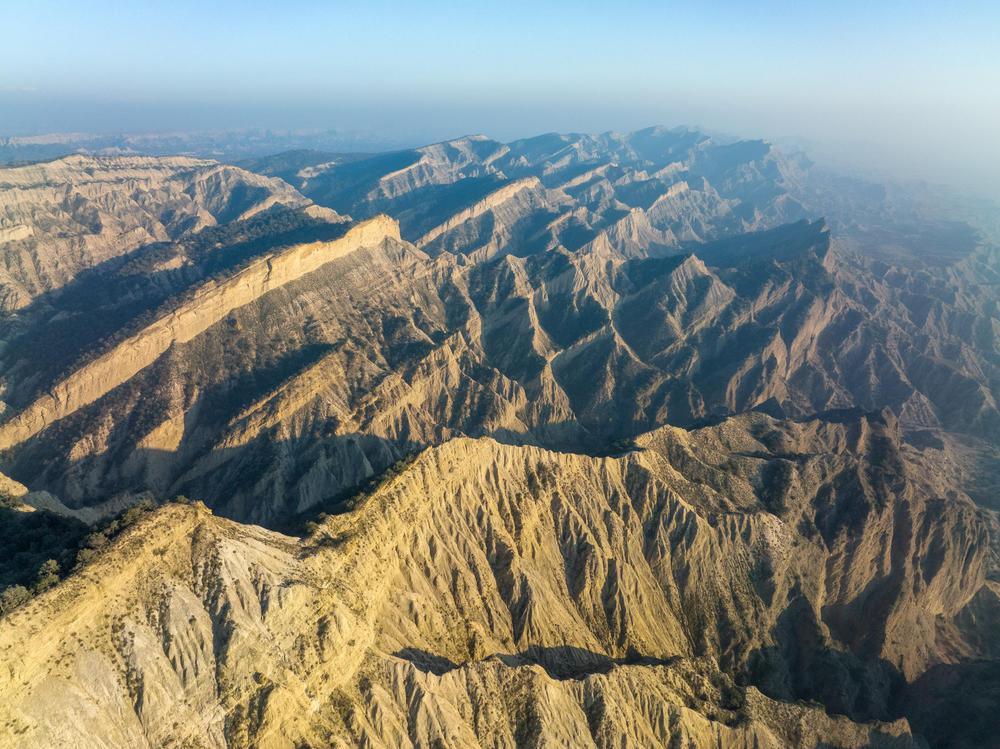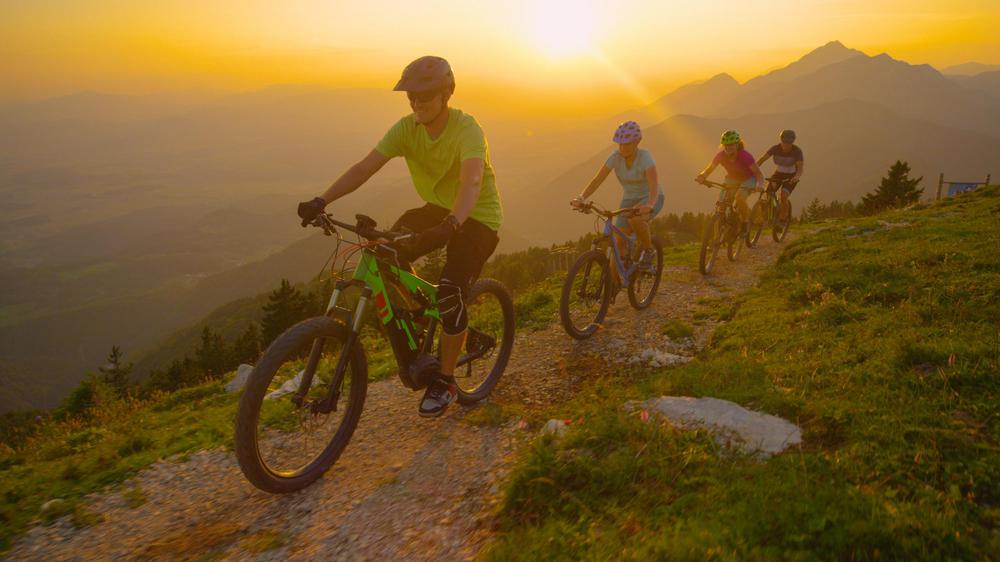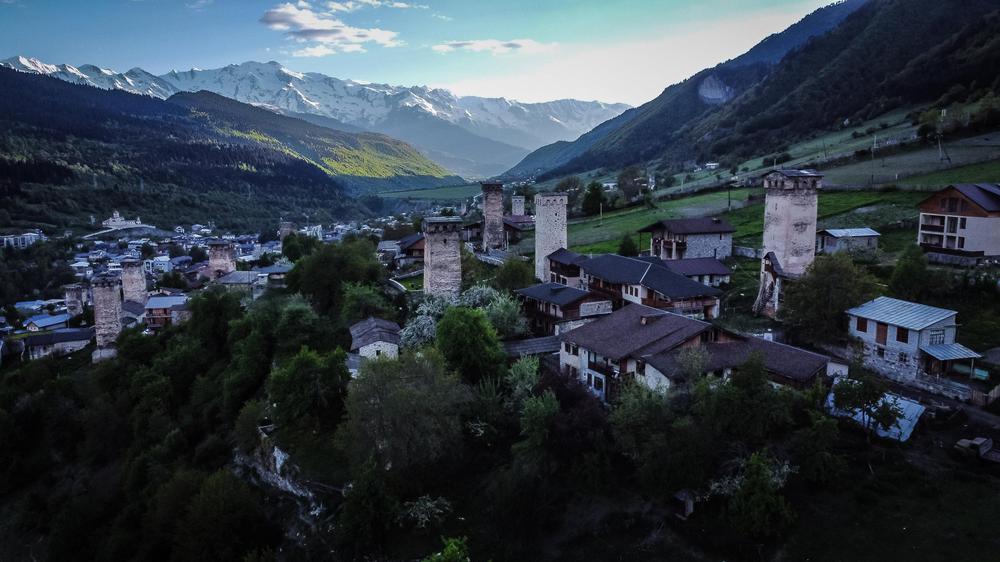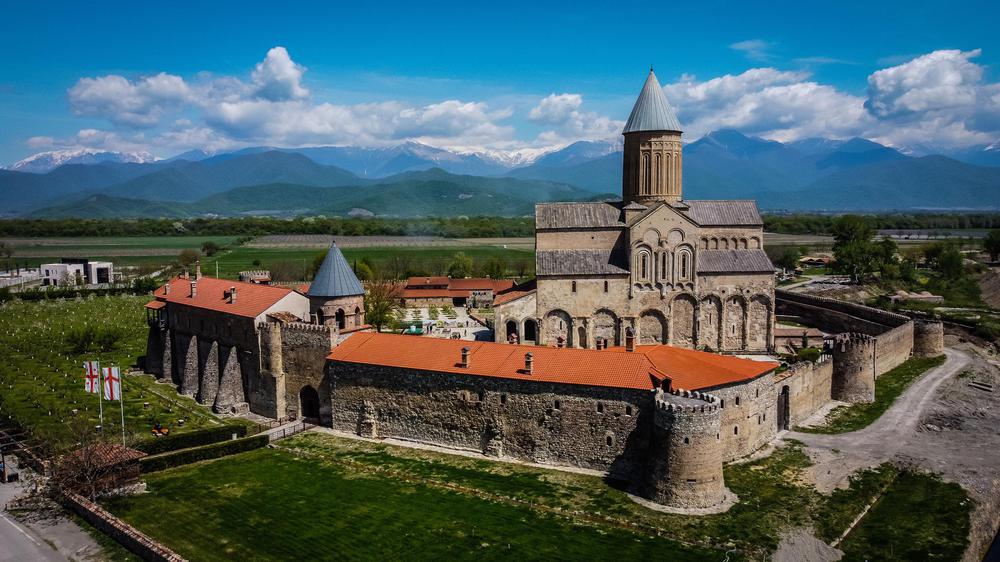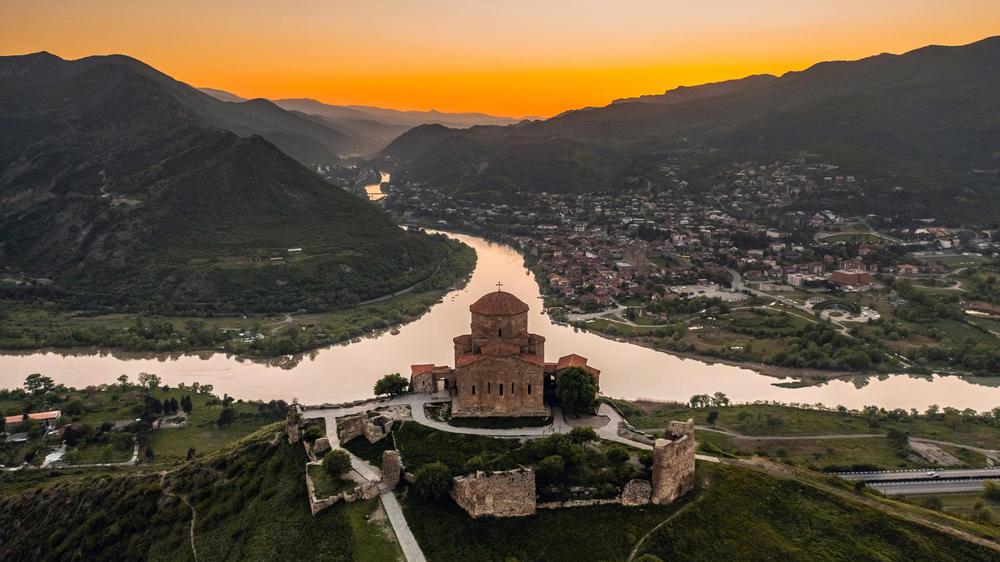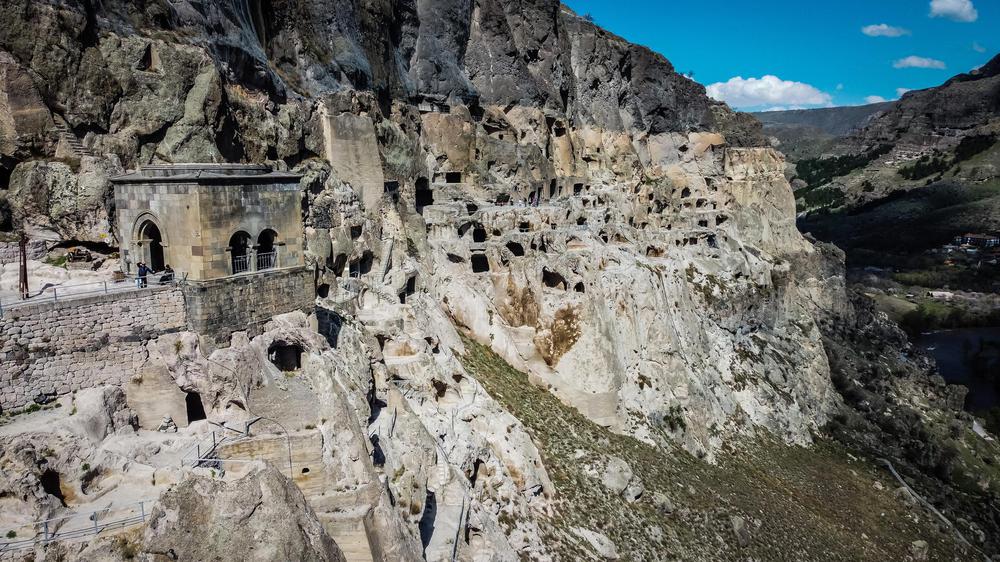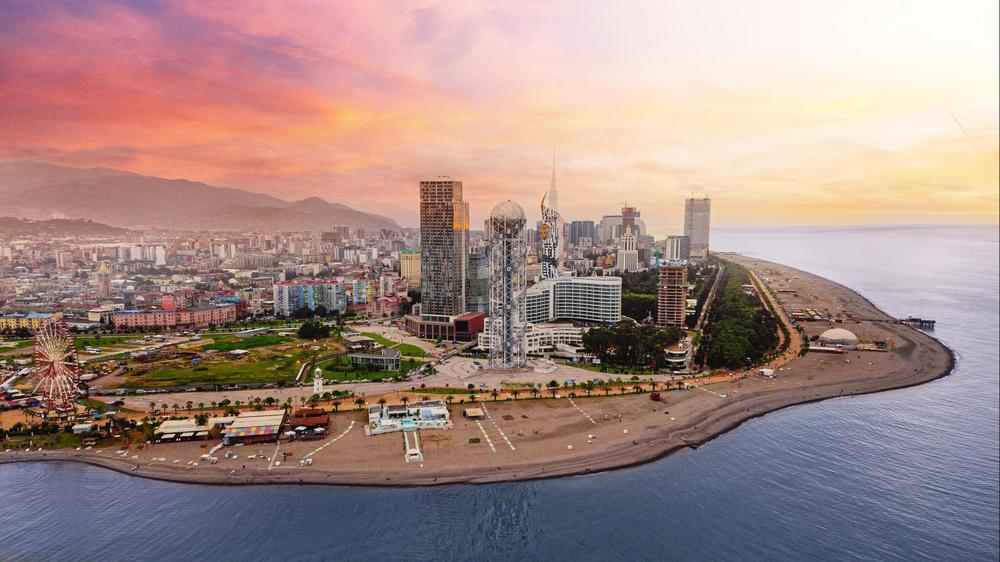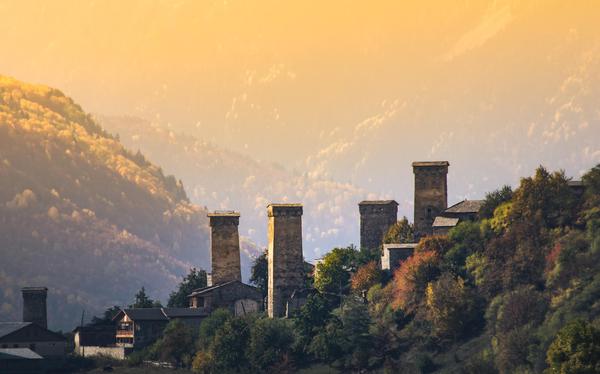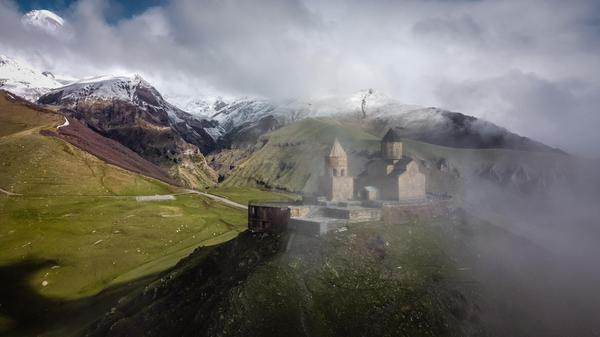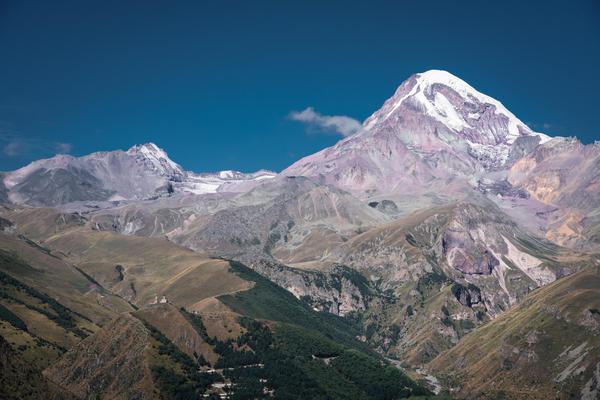Introduction
Georgia, a small country nestled at the crossroads of Europe and Asia, is home to an astonishing array of landscapes and natural wonders. From the soaring peaks of the Caucasus Mountains to the lush subtropical Black Sea coast, Georgia's diverse geography offers visitors a rich tapestry of breathtaking scenery and awe-inspiring natural beauty. The country's unique topography has played a crucial role in shaping its culture, history, and identity, making Georgia a truly captivating destination for nature lovers and adventurers alike. This article aims to guide you through the varied landscapes and natural wonders that make Georgia a land of contrasts, providing you with an enticing glimpse into the country's remarkable geographical diversity.
Mountain Landscapes
Georgia's dramatic mountain landscapes are among its most iconic and impressive features, offering both stunning vistas and fascinating cultural experiences. The country is home to two major mountain ranges: the Greater Caucasus Range in the north and the Lesser Caucasus Range in the south. These majestic peaks harbor ancient traditions, remote villages, and awe-inspiring natural beauty, making them a must-see for any visitor to Georgia.
The Greater Caucasus Range
Stretching across the northern border of Georgia, the Greater Caucasus Range is a formidable natural barrier that boasts some of the highest peaks in Europe. This rugged landscape is home to glaciers, alpine meadows, and an array of endemic flora and fauna, making it a paradise for hikers and nature enthusiasts.
Svaneti Region
Nestled within the Greater Caucasus Range, the Svaneti Region is a true gem of Georgia's mountainous landscapes. Known for its medieval stone towers and unique culture, Svaneti is an ideal destination for those seeking to experience Georgia's rich history and breathtaking mountain scenery. The region's highlights include Ushguli, a UNESCO World Heritage Site and one of the highest permanently inhabited settlements in Europe, and Mount Ushba, a challenging peak revered by mountaineers.
Kazbegi And Mount Kazbek
Further east in the Greater Caucasus Range, the region of Kazbegi is home to the iconic Mount Kazbek, one of Georgia's highest peaks. The stunning Gergeti Trinity Church, perched on a hillside near the town of Stepantsminda, is a must-visit destination, offering panoramic views of the surrounding mountains. Kazbegi is a popular spot for trekking, mountaineering, and birdwatching, attracting outdoor enthusiasts from around the world.
The Lesser Caucasus Range
The Lesser Caucasus Range, located in the southern part of Georgia, offers a more gentle and rolling landscape compared to its northern counterpart. This region is characterized by its lush forests, fertile valleys, and diverse wildlife, making it an ideal destination for those seeking a more tranquil mountain experience.
Vardzia Cave City
Carved into the cliffs of the Lesser Caucasus Range, the ancient cave city of Vardzia is a testament to Georgia's rich history and architectural prowess. This sprawling complex, which dates back to the 12th century, features a labyrinth of cave dwellings, churches, and tunnels, offering visitors a unique glimpse into the country's past. Exploring Vardzia is a fascinating experience and a must-see for any visitor to Georgia's mountainous regions.
National Parks And Nature Reserves
Georgia's commitment to preserving its natural heritage is evident in its numerous national parks and nature reserves, which protect a wide range of ecosystems and showcase the country's impressive biodiversity. From dense forests and mountain meadows to wetlands and alpine lakes, these protected areas provide ample opportunities for nature lovers to explore and appreciate Georgia's remarkable landscapes.
Borjomi-Kharagauli National Park
Located in central Georgia, Borjomi-Kharagauli National Park is one of the largest protected areas in the country, covering over 85,000 hectares of pristine wilderness. The park is home to diverse flora and fauna, including rare species such as the Caucasian red deer and the Eurasian lynx. With its extensive network of well-marked hiking trails, Borjomi-Kharagauli is an ideal destination for trekking, wildlife spotting, and birdwatching. Visitors can also enjoy the park's natural mineral springs and the picturesque town of Borjomi, famous for its curative waters.
Tusheti National Park
Tusheti National Park, situated in the remote northeastern corner of Georgia, is a true haven for adventurers and nature enthusiasts. This rugged and largely inaccessible region boasts dramatic mountain landscapes, centuries-old fortified villages, and a unique cultural heritage. Hiking and horseback riding are popular activities in Tusheti, offering the chance to explore its pristine alpine meadows, deep gorges, and abundant wildlife. Tusheti is also a UNESCO Biosphere Reserve, reflecting its importance as a hotspot of biodiversity and traditional land-use practices.
Lagodekhi Protected Areas
Located on the southern slopes of the Greater Caucasus Range, near the border with Azerbaijan, Lagodekhi Protected Areas encompass a diverse range of ecosystems, from lush forests to alpine meadows. The reserve is home to rare and endemic species, such as the East Caucasian tur and the Caucasian leopard. Visitors can explore Lagodekhi's pristine wilderness through a variety of hiking trails, which cater to different levels of fitness and experience. Highlights include the stunning Ninoskhevi Waterfall and the serene Black Rock Lake, both of which offer breathtaking views and rewarding trekking experiences.
Coastal And Marine Landscapes
In contrast to its rugged mountain landscapes, Georgia's Black Sea coast offers visitors a unique blend of subtropical beauty, sandy beaches, and vibrant coastal cities. Stretching for approximately 310 kilometers, the coastline is dotted with picturesque towns, lush botanical gardens, and protected natural areas, providing ample opportunities for relaxation, exploration, and water-based activities.
The Black Sea Coast
Georgia's Black Sea coast is characterized by its warm climate, palm-tree-lined promenades, and bustling resorts. The region is known for its unique ecosystems, which include a mix of coastal wetlands, forests, and marine habitats. Visitors can enjoy a variety of activities along the coast, from sunbathing and swimming to birdwatching and boat tours.
Batumi And Its Botanical Garden
Batumi, the lively capital of Georgia's Autonomous Republic of Adjara, is a popular destination for both locals and tourists alike. The city's subtropical climate and scenic setting make it an ideal spot for beachgoers, while its vibrant nightlife and cultural attractions cater to those seeking entertainment and excitement. One of Batumi's highlights is its famed botanical garden, which spans over 110 hectares and features thousands of plant species from around the world. This lush haven offers stunning views of the Black Sea and is a must-visit for nature lovers and garden enthusiasts.
Kolkheti National Park And Paliastomi Lake
Kolkheti National Park, situated along Georgia's central Black Sea coast, is a haven for wildlife and a prime destination for birdwatching. The park encompasses vast wetlands, including the impressive Paliastomi Lake, which is home to numerous species of waterfowl, wading birds, and other aquatic life. Visitors can explore Kolkheti National Park through guided boat tours and hiking trails, allowing them to appreciate its unique ecosystems and rich biodiversity up close.
Semi-Desert And Arid Landscapes
In stark contrast to the lush, green landscapes found elsewhere in the country, Georgia also boasts semi-desert and arid regions that offer a different kind of beauty. These areas, characterized by their sparse vegetation and rugged terrain, showcase the remarkable diversity of Georgia's natural landscapes and provide visitors with the opportunity to experience a truly unique side of the country.
David Gareja Monastery Complex
Located in the semi-desert region of southeastern Georgia, the David Gareja Monastery Complex is a stunning example of the country's rich cultural and religious heritage. Founded in the 6th century, this sprawling cave monastery is carved into the slopes of Mount Gareja, offering breathtaking views of the surrounding arid landscape. Visitors can explore the monastery's ancient frescoes, chapels, and living quarters, all while appreciating the stark beauty of the region.
Vashlovani Protected Areas
The Vashlovani Protected Areas, situated in Georgia's southeastern corner, comprise a unique ecosystem that includes semi-deserts, arid woodlands, and riparian forests. This diverse landscape is home to a wide array of plant and animal species, including the endangered Caucasian leopard and the Bezoar goat. Visitors can explore the Vashlovani Protected Areas through a network of hiking trails and 4x4 routes, providing a fantastic opportunity to experience Georgia's arid landscapes and discover the region's unique flora and fauna.
Wetlands And Marshlands
Georgia's wetlands and marshlands represent some of the most ecologically significant and biodiverse habitats in the country. These areas provide vital breeding grounds for numerous bird species, support an array of plant life, and act as natural filters for water resources. Georgia's wetlands and marshlands are vital for maintaining the overall health of the country's ecosystems and provide visitors with unique opportunities for birdwatching, photography, and nature exploration.
Kolkheti National Park
As mentioned earlier, Kolkheti National Park is a prominent wetland area situated along the Black Sea coast. The park encompasses extensive coastal wetlands, including lakes, swamps, and river estuaries that support a wide variety of bird and aquatic life. The park's diverse habitats make it an important location for migratory and nesting bird species, including the Dalmatian pelican, purple heron, and white-tailed eagle. Visitors to Kolkheti National Park can explore its wetlands through guided boat tours and birdwatching excursions, offering a unique glimpse into the rich biodiversity of the region.
Javakheti Wetlands
Located in the southern part of Georgia, the Javakheti Wetlands are a series of high-altitude lakes and marshes that provide a vital sanctuary for migratory birds and endemic species. The region is home to numerous bird species, such as the Armenian gull, white stork, and black-winged stilt. The Javakheti Wetlands offer visitors a chance to explore the unique habitats and observe the abundant birdlife that thrives in these areas. Additionally, the region's pristine landscapes, including volcanic plateaus and alpine meadows, provide ample opportunities for hiking, photography, and nature appreciation.
Caves And Karst Landscapes
Georgia's caves and karst landscapes showcase yet another dimension of the country's geological diversity. Formed by the dissolution of soluble rocks such as limestone, dolomite, and gypsum, these underground formations are characterized by their intricate systems of caves, sinkholes, and underground rivers. Georgia's caves and karst landscapes offer visitors the opportunity to explore the hidden depths of the country and marvel at the stunning natural formations found beneath the surface.
Prometheus Cave
Prometheus Cave, also known as Kumistavi Cave, is one of Georgia's most remarkable natural wonders. Located near the town of Tskaltubo in western Georgia, this extensive cave system features breathtaking stalactite and stalagmite formations, as well as underground rivers and lakes. Visitors can explore the cave on a guided tour, traversing well-lit walkways that showcase the cave's impressive geological formations. The cave's striking beauty, combined with its mythological association with the ancient Greek tale of Prometheus, make it a must-see attraction for visitors to Georgia.
Sataplia Nature Reserve
Sataplia Nature Reserve, situated in the Imereti region of western Georgia, is another fascinating destination for those interested in the country's karst landscapes. The reserve is home to the Sataplia Cave, which boasts an array of beautiful stalactites, stalagmites, and underground rivers. Additionally, the reserve is known for its dinosaur footprints, which are preserved in the limestone and can be observed on a dedicated viewing platform. Visitors to Sataplia Nature Reserve can also explore the surrounding forests and enjoy panoramic views of the region from a glass-bottomed observation deck.
Conclusion
From the soaring peaks of the Caucasus Mountains to the fertile wetlands and marshlands, and from the rugged semi-desert landscapes to the intricate cave systems, Georgia truly offers a remarkable range of diverse landscapes and natural wonders. These unique environments not only contribute to the country's rich biodiversity but also play a significant role in shaping Georgia's culture and history.
For anyone interested in discovering the wonders of nature, Georgia provides an unparalleled opportunity to explore and experience its incredible geography and natural beauty firsthand. Whether you are a seasoned adventurer or a casual nature lover, the country offers something for everyone to enjoy, with numerous national parks, reserves, and protected areas that cater to a wide range of interests and abilities.
As you embark on your journey to explore Georgia's diverse landscapes and natural wonders, it's essential to remember the importance of responsible tourism and protecting these fragile ecosystems for future generations. Always follow established guidelines, respect local customs, and leave no trace behind as you discover the amazing beauty that Georgia has to offer. With an open mind and an adventurous spirit, you are sure to create unforgettable memories and gain a deeper appreciation for the incredible diversity of our planet.



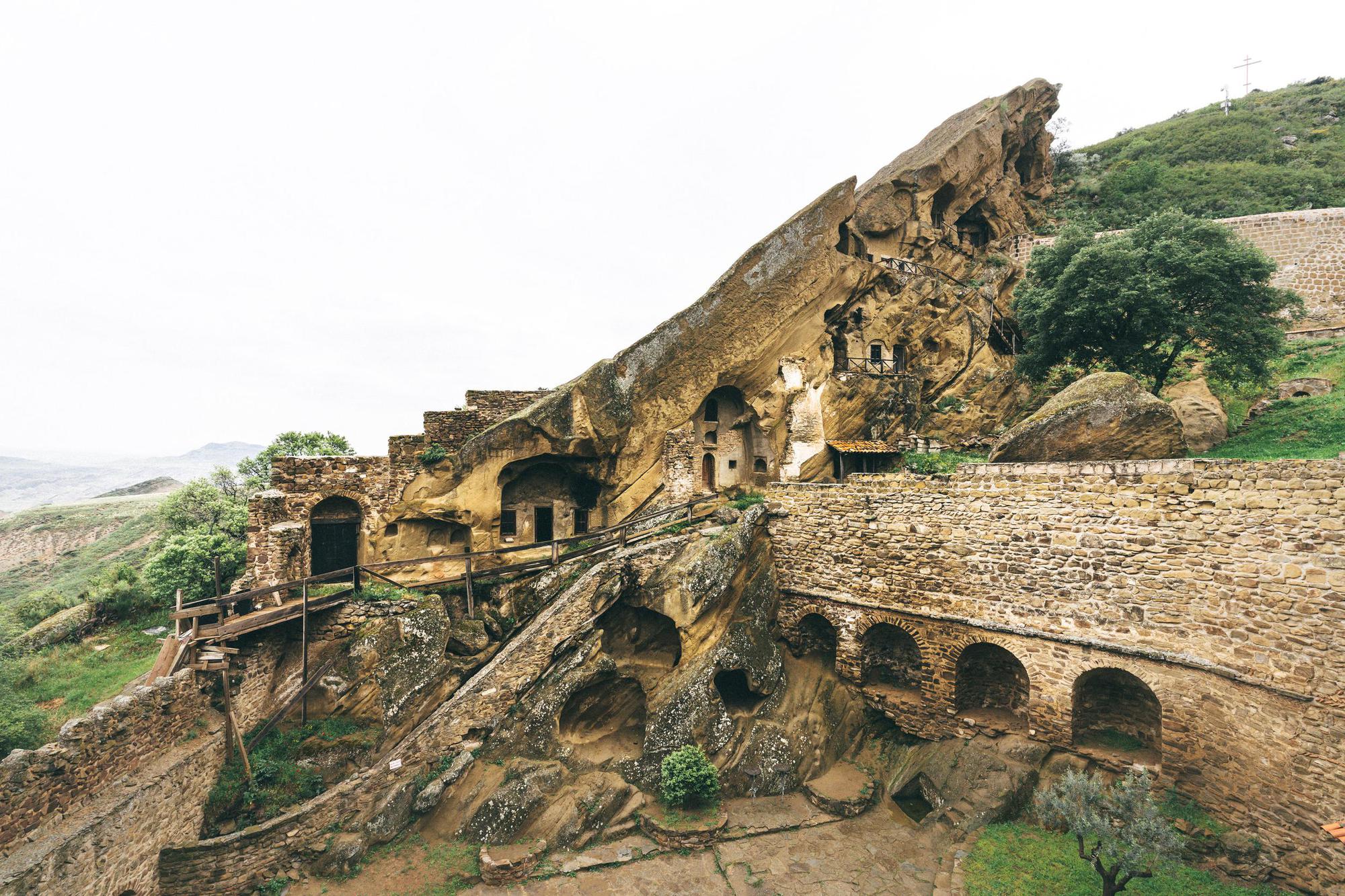
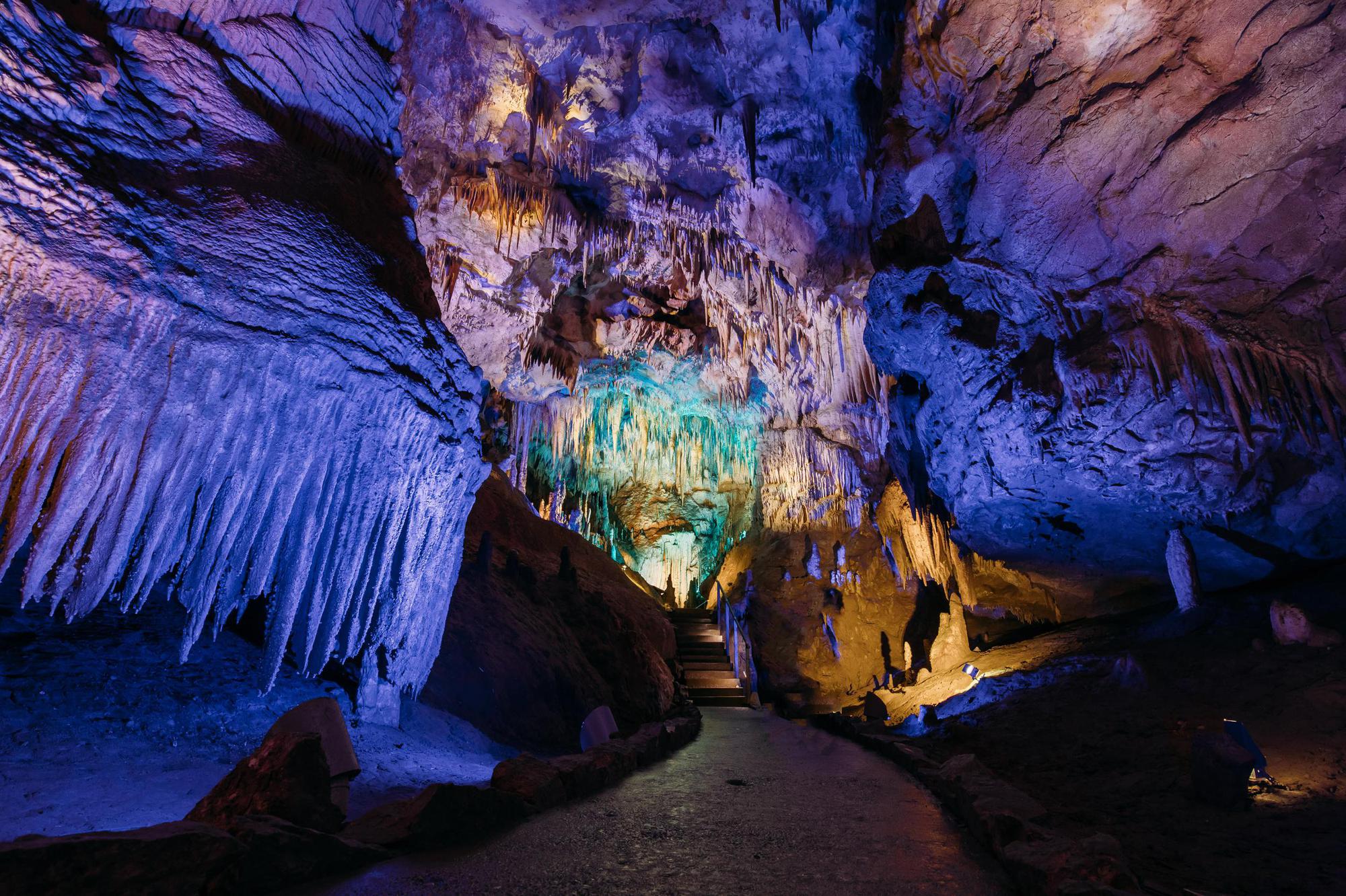
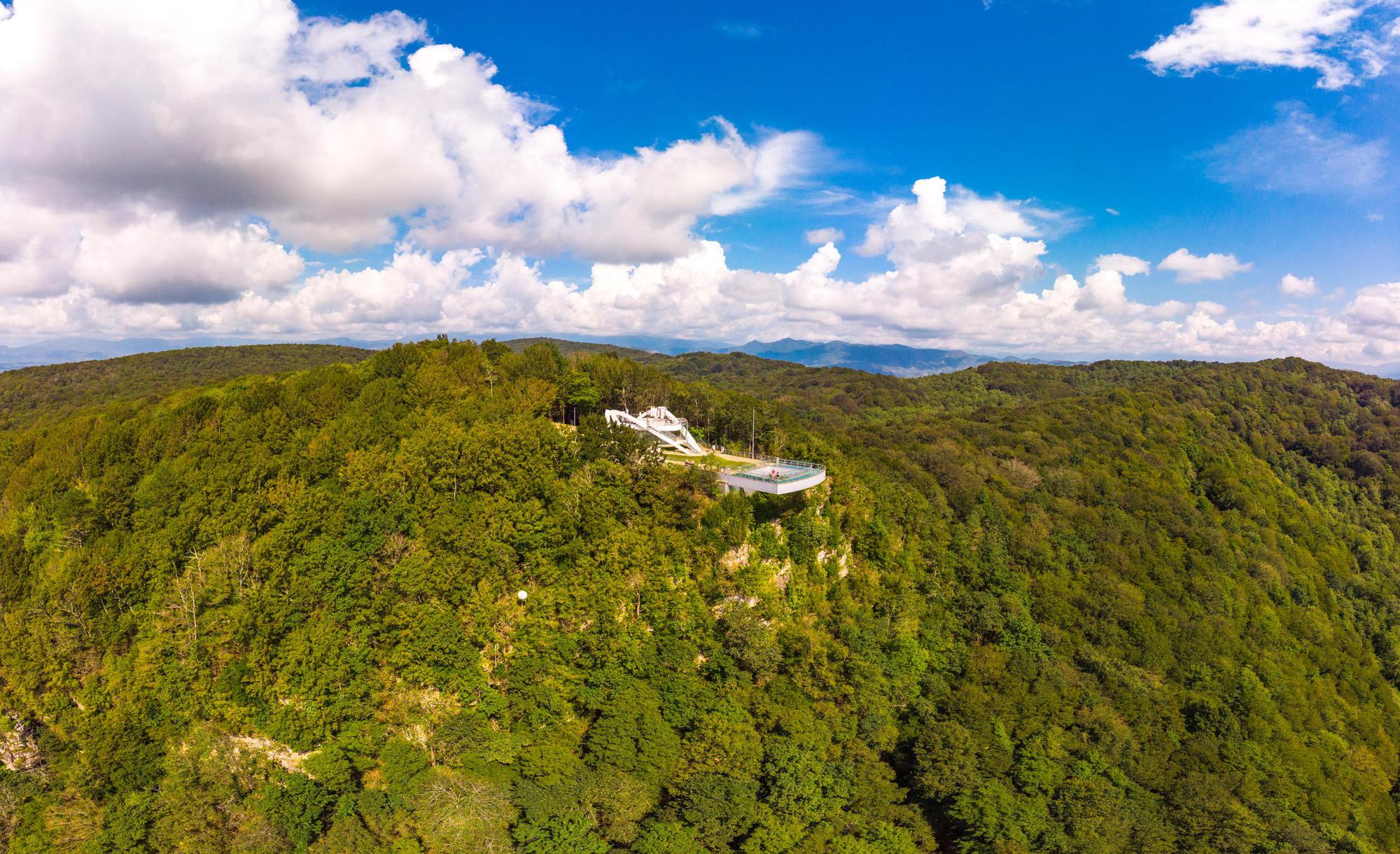
 Into the Wild
Into the Wild
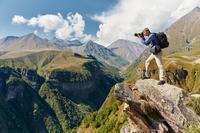 A Photographer's Dream
A Photographer's Dream
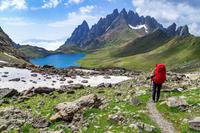 Adrenaline Rush
Adrenaline Rush
 Georgia's Mountain Ranges
Georgia's Mountain Ranges
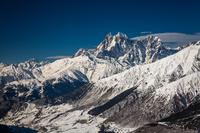 The Majestic Georgia Mountains
The Majestic Georgia Mountains
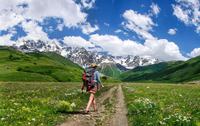 Svaneti Trekking Routes
Svaneti Trekking Routes
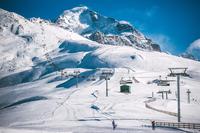 Ski Resorts of Georgia
Ski Resorts of Georgia
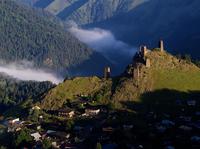 Tusheti Hiking Trails
Tusheti Hiking Trails
 Hiking Trails of Kazbegi
Hiking Trails of Kazbegi
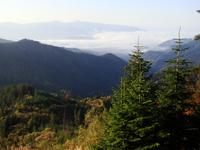 Trails of Borjomi-Kharagauli National Park
Trails of Borjomi-Kharagauli National Park
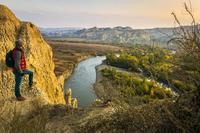 Vashlovani Biodiversity Safaris
Vashlovani Biodiversity Safaris
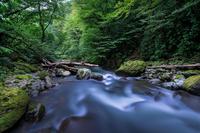 Trails of Mtirala National Park
Trails of Mtirala National Park
 Kolkheti National Park Tourist Routes
Kolkheti National Park Tourist Routes
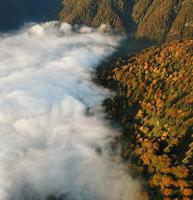 Trails of Lagodekhi Protected Areas
Trails of Lagodekhi Protected Areas
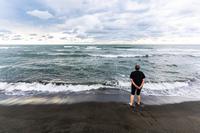 Ureki Magnetic Sand: The Therapeutic Treasure of Georgia
Ureki Magnetic Sand: The Therapeutic Treasure of Georgia
 Anaklia: Georgia's Modern Resort Gem
Anaklia: Georgia's Modern Resort Gem
 Top 14 Beaches of the Georgian Black Sea
Top 14 Beaches of the Georgian Black Sea
 Martvili Canyon Boat Rides
Martvili Canyon Boat Rides
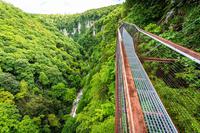 Okatse Canyon Hiking Trails
Okatse Canyon Hiking Trails
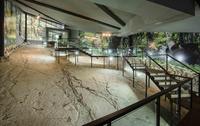 Prehistoric Footprints of Sataplia Cave
Prehistoric Footprints of Sataplia Cave
 Melouri Cave System
Melouri Cave System
 Light Show at Prometheus Cave
Light Show at Prometheus Cave
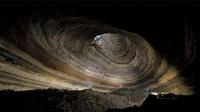 Krubera Cave Expeditions
Krubera Cave Expeditions
